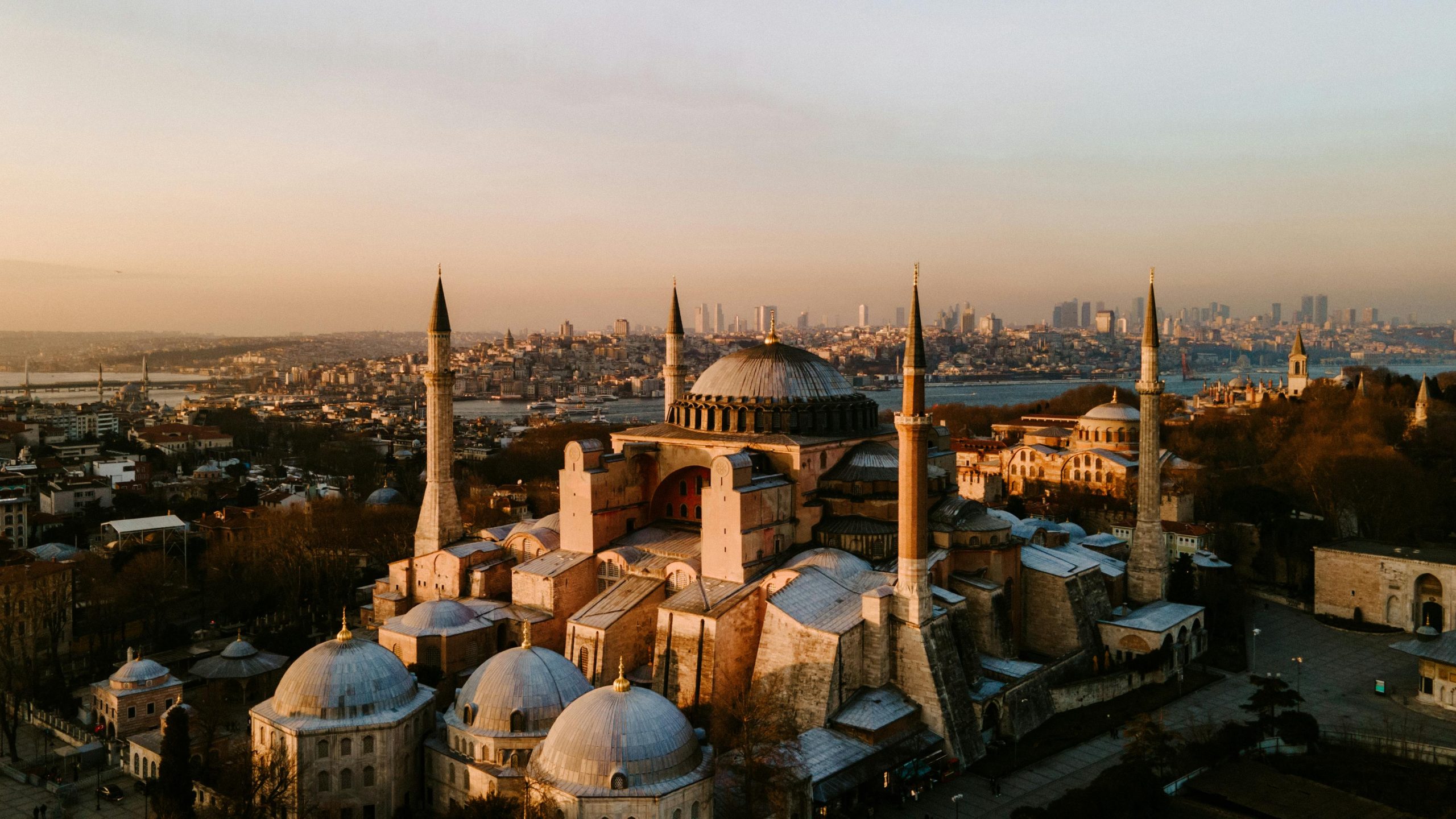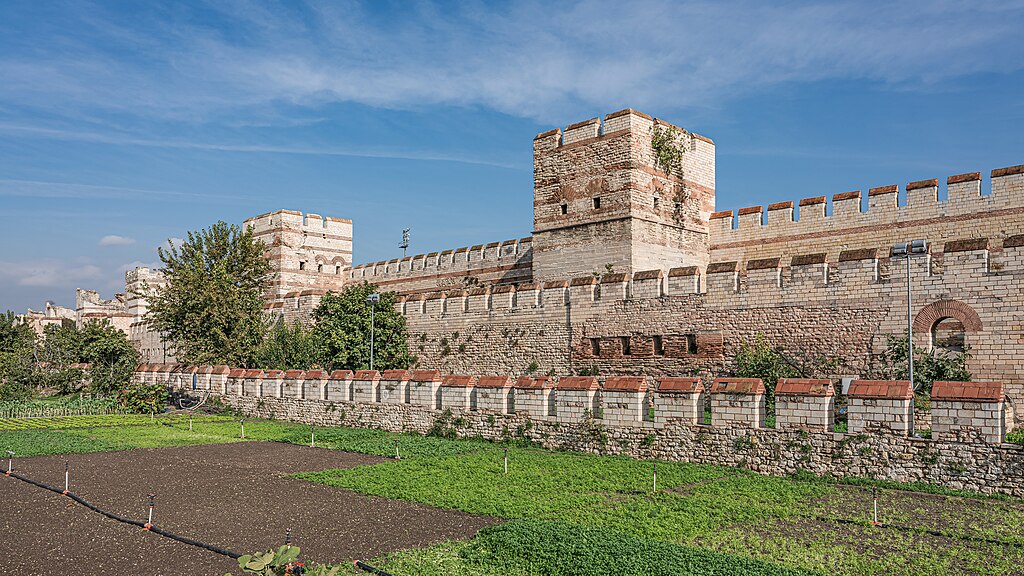Fountain of Ahmed III, Istanbul
Fountain in Istanbul

Standing gracefully before the Imperial Gate of Topkapi Palace, the Fountain of Ahmed III (Ahmet Çeşmesi) is one of Istanbul's finest examples of Ottoman Rococo style. Built in 1728 during the reign of Sultan Ahmed III, this elegant structure once served as a lively social hub — a place where locals gathered, travelers refreshed themselves, and poetry quite literally flowed through its waters. It remains one of the best places to visit in Istanbul for travelers who love architecture and history blended with artistry.
Located between Topkapi Palace and Hagia Sophia, this ornate fountain is often visited on walking tours of Istanbul's Old City. Its blend of Western Baroque curves with traditional Ottoman design marks a turning point in Turkish architecture, symbolizing the empire's 18th-century embrace of refinement and elegance.
Table of Contents
- History and Significance of the Fountain of Ahmed III
- Things to See and Do at the Fountain of Ahmed III
- How to Get There
- Practical Tips on Visiting the Fountain of Ahmed III
- Is the Fountain of Ahmed III worth visiting?
- FAQs for Visiting the Fountain of Ahmed III
- Nearby Attractions to the Fountain of Ahmed III
History and Significance of the Fountain of Ahmed III
The Fountain of Ahmed III was commissioned by Sultan Ahmed III, one of the most culturally minded rulers of the Ottoman Empire, known for his patronage of art, literature, and design. Built on the site of an older Byzantine fountain known as the Perayton, it embodied the new aesthetic of the Tulip Era — a period when Ottoman taste began to shift toward more decorative and European-inspired forms.
The structure combines elements of Baroque and classical Ottoman styles, featuring a square plan crowned by five small domes. Each of its four façades contains a recessed niche (inspired by the mihrab found in mosques), housing a çeşme — a public drinking fountain — decorated with intricate floral carvings and arabesques. An octagonal reservoir inside supplied the water, while attendants distributed it through bronze grilles, offering it freely to the public as an act of charity.
Above each fountain are large calligraphic panels inscribed with verses in elegant thuluth script. The fourteen-line poem dedicated to water, written by Seyyid Hüseyin Vehbi bin Ahmed, praises the purity of water and the generosity of the sultan who provided it. These inscriptions remain among the most celebrated examples of Ottoman calligraphy.
Things to See and Do at the Fountain of Ahmed III
The fountain's artistry lies in its details — from its graceful dome structure to the intricate foliate and floral motifs that cover its facades. Visitors can admire the exquisite stonework, tiled borders, and the calligraphic panels, each framed in red and blue tiles. Look closely at the arabesque designs and rococo flourishes that give the monument its soft, fluid character, setting it apart from earlier, more austere Ottoman architecture.
It's worth walking around all four sides, as each façade features slightly different decorative details and poetic inscriptions. The fountain also offers an excellent vantage point for photography, with Topkapi Palace rising behind it and Hagia Sophia visible nearby. In the evenings, subtle lighting enhances the delicate carvings, making it one of the most romantic historical spots in the Sultanahmet district.
How to Get There
The Fountain of Ahmed III stands directly in front of the Imperial Gate of Topkapi Palace, between Hagia Sophia and Gülhane Park. The T1 tram line stops at Sultanahmet or Gülhane stations, both a short walk away. For those arriving by train, Sirkeci railway station is around 10 minutes on foot. You can use the official TCDD Taşımacılık website to check schedules, compare routes, and purchase tickets for Turkey's national and regional trains operated by TCDD. For a more streamlined experience (especially if you prefer an English interface or want to compare across countries), we recommend using Omio, which allows you to easily compare prices, schedules, and book train tickets across Turkey and the rest of Europe — all in one place. Drivers will find limited parking along Kennedy Avenue near the outer palace walls, though walking is generally the easiest way to reach the site. If you are looking to rent a car in Turkey I recommend having a look at Discover Cars, first, as they compare prices and review multiple car rental agencies for you.
Practical Tips on Visiting the Fountain of Ahmed III
- Best time to visit the Fountain of Ahmed III: Early morning or late afternoon for softer light and fewer crowds.
- Entrance fee in Euros: Free; the fountain is outdoors.
- Opening hours: Accessible 24 hours daily.
- Official website: Not applicable.
- How long to spend: 10–20 minutes.
- Accessibility: Fully accessible via paved walkways.
- Facilities: Cafés, shops, and rest areas nearby in Sultanahmet Square.
- Photography tip: Capture the fountain's dome and intricate carvings with Topkapi's gate behind it for depth and symmetry.
- Guided tours: Included in many Topkapi Palace and Sultanahmet walking tours.
- Nearby food options: Traditional restaurants and tea gardens along the outer walls of Topkapi and Gülhane Park.
Is the Fountain of Ahmed III worth visiting?
Yes — absolutely. The Fountain of Ahmed III is one of the top sights in Istanbul for lovers of Ottoman architecture and decorative arts. Beyond its beauty, it represents the cultural spirit of the Tulip Era — a time when art, elegance, and generosity defined daily life in the empire. Whether you're exploring Topkapi Palace or simply wandering through Sultanahmet, it's a spot where you can pause, reflect, and admire the delicate artistry of an age long past.
FAQs for Visiting the Fountain of Ahmed III
Can I drink from the fountain today?
No, it no longer functions as a public water source, but the structure is beautifully preserved.
Who designed the fountain?
It was built under the direction of architect Mehmed Ağa in 1728 during Sultan Ahmed III's reign.
Is it illuminated at night?
Yes, soft lighting highlights its decorative features after sunset.
Can I enter inside the fountain pavilion?
No, the interior is not open to the public, but the exterior can be viewed freely.
Does it have any relation to Topkapi Palace?
Yes, it was built directly in front of the Imperial Gate as a public and ceremonial landmark for palace visitors.
Nearby Attractions to the Fountain of Ahmed III
- Topkapi Palace – The grand residence of Ottoman sultans, filled with art and imperial treasures.
- Hagia Sophia – The legendary Byzantine basilica-turned-mosque, steps away from the fountain.
- Gülhane Park – A lush historic park once part of the palace gardens.
- Archaeology Museums of Istanbul – A world-class collection of ancient artifacts adjacent to the palace.
- Basilica Cistern – The atmospheric underground reservoir built by Emperor Justinian I.
The Fountain of Ahmed III appears in our Complete Guide to Visiting Istanbul!
This website uses affiliate links which may earn a commission at no additional cost to you!
Visiting Fountain of Ahmed III
Accessible 24 hours daily.
Free; the fountain is outdoors.
Nearby Attractions
- Maiden’s Tower (1.1) km
Island and Tower in Istanbul - Dolmabahçe Palace (2.0) km
Palace in Istanbul - Topkapi Palace (3.2) km
Palace in Istanbul - Istanbul Archaeological Museum (3.3) km
Museum in Istanbul - Hagia Irene (3.4) km
Church and Museum in Istanbul - Galata Tower (3.5) km
Tower in Istanbul - Sogukcesme Street (3.5) km
Street in no_link - Hagia Sophia (3.6) km
Cathedral and Mosque in Istanbul - Hurrem Sultan Hamam (3.7) km
Baths and Historic Building in Istanbul - Basilica Cistern (3.7) km
Historic Building in Istanbul


